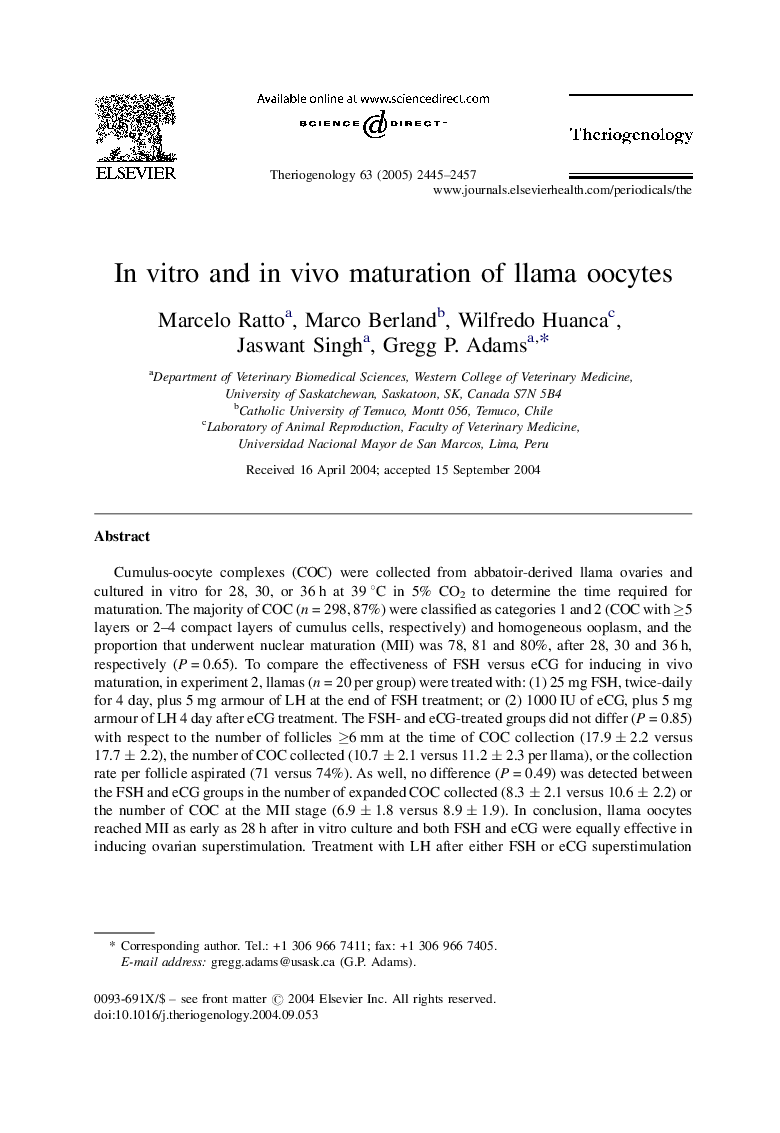| Article ID | Journal | Published Year | Pages | File Type |
|---|---|---|---|---|
| 2097475 | Theriogenology | 2005 | 13 Pages |
Cumulus-oocyte complexes (COC) were collected from abbatoir-derived llama ovaries and cultured in vitro for 28, 30, or 36 h at 39 °C in 5% CO2 to determine the time required for maturation. The majority of COC (n = 298, 87%) were classified as categories 1 and 2 (COC with ≥5 layers or 2–4 compact layers of cumulus cells, respectively) and homogeneous ooplasm, and the proportion that underwent nuclear maturation (MII) was 78, 81 and 80%, after 28, 30 and 36 h, respectively (P = 0.65). To compare the effectiveness of FSH versus eCG for inducing in vivo maturation, in experiment 2, llamas (n = 20 per group) were treated with: (1) 25 mg FSH, twice-daily for 4 day, plus 5 mg armour of LH at the end of FSH treatment; or (2) 1000 IU of eCG, plus 5 mg armour of LH 4 day after eCG treatment. The FSH- and eCG-treated groups did not differ (P = 0.85) with respect to the number of follicles ≥6 mm at the time of COC collection (17.9 ± 2.2 versus 17.7 ± 2.2), the number of COC collected (10.7 ± 2.1 versus 11.2 ± 2.3 per llama), or the collection rate per follicle aspirated (71 versus 74%). As well, no difference (P = 0.49) was detected between the FSH and eCG groups in the number of expanded COC collected (8.3 ± 2.1 versus 10.6 ± 2.2) or the number of COC at the MII stage (6.9 ± 1.8 versus 8.9 ± 1.9). In conclusion, llama oocytes reached MII as early as 28 h after in vitro culture and both FSH and eCG were equally effective in inducing ovarian superstimulation. Treatment with LH after either FSH or eCG superstimulation permitted the recovery of a preponderance of expanded COC in metaphase II that may be suitable for in vitro fertilization without in vitro maturation.
